#blattidae
Text
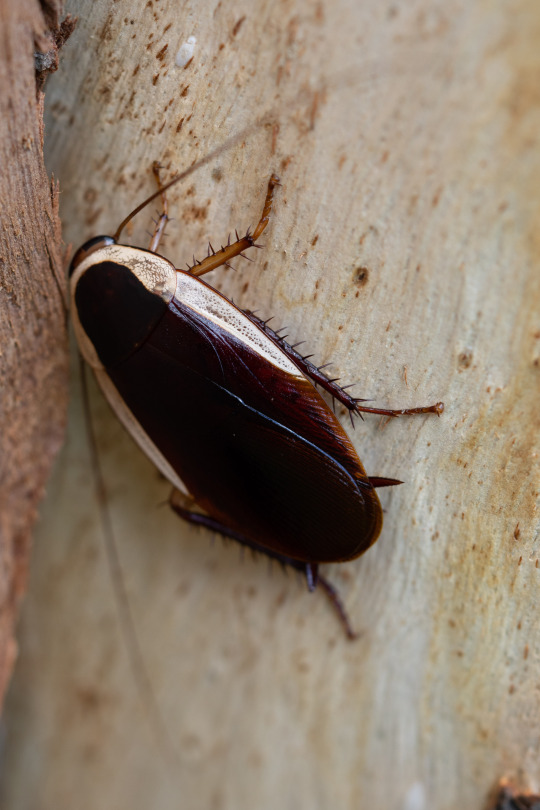
exquisite creature chilling under some gumtree bark.

Unknown Cockroach (genus Methana).
#ljsbugblog#bugblr#entomology#macro#insects#blattodea#cockroaches#blattidae#household cockroaches#methana#unconfirmed id
850 notes
·
View notes
Text

Mitchell's Diurnal Cockroach (Polyzosteria mitchelli), family Blattidae, order Blattodea, Bunjil, Western Australia
photograph by v_winter
418 notes
·
View notes
Text
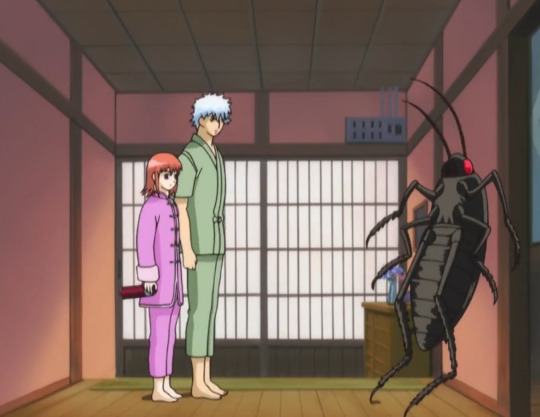
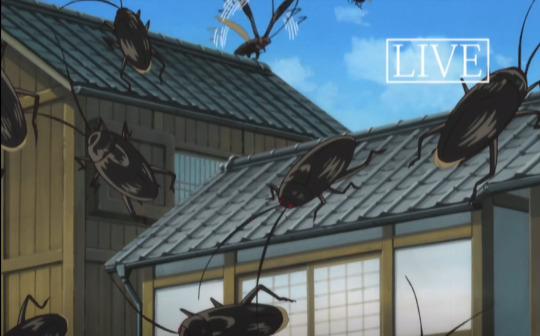

Today’s anime insects of the day are: the giant cockroaches from Gintama
Order: Blattodea
Family: Blattidae(?)
113 notes
·
View notes
Text
cockroaches have always been a group I hold in high esteem among the insects, and I saw a lot of nice ones in Singapore & Malaysia this past summer.
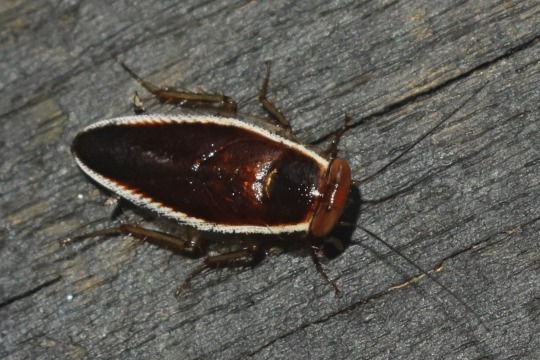
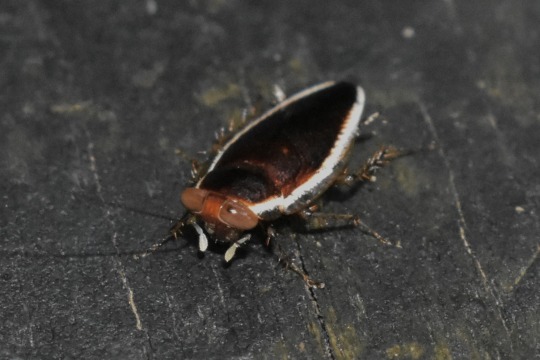
first is the tiny Pseudophyllodromia laticeps, whose name means ‘broad-headed’ but really most of its head are huge eyes! unlike the rest of these cockroaches, which are nocturnal, these flit around in daylight like houseflies and are just as quick to take flight when approached.
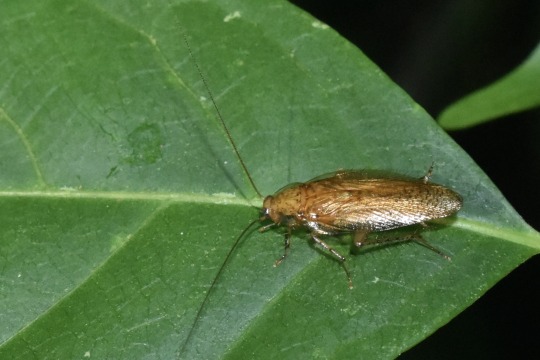
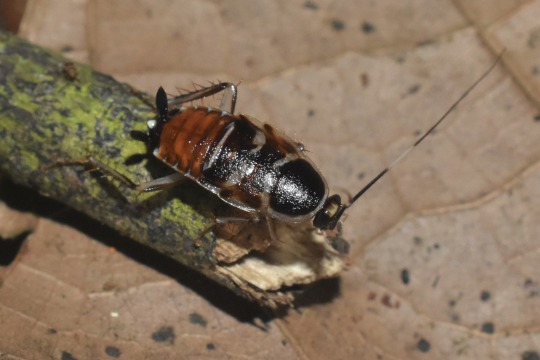
I’m not fully sure what these next two are, perhaps blatellids.
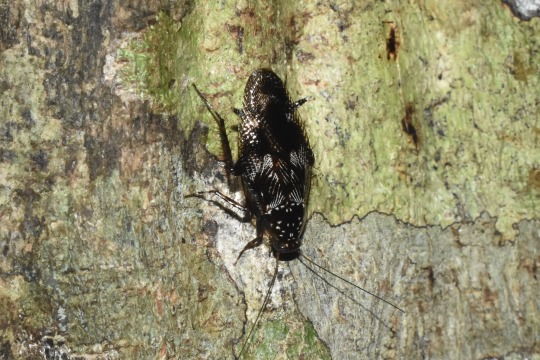
Allacta is another pseudophyllodromiid and a very charming one, with delicate white markings on a shiny black background.
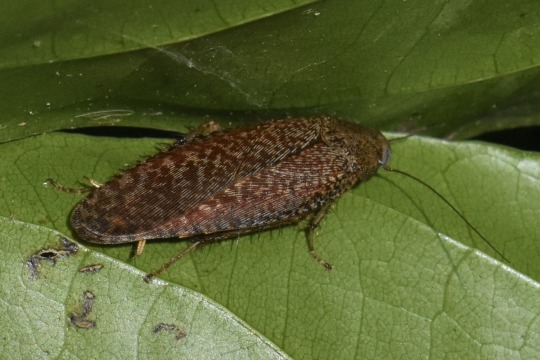
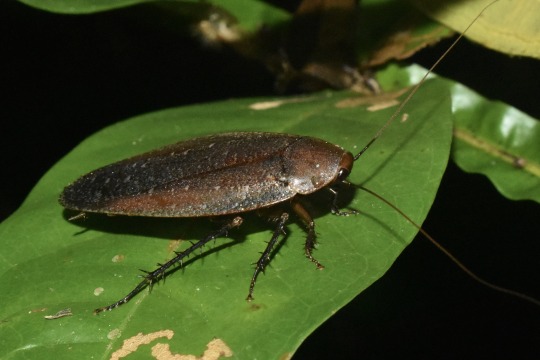
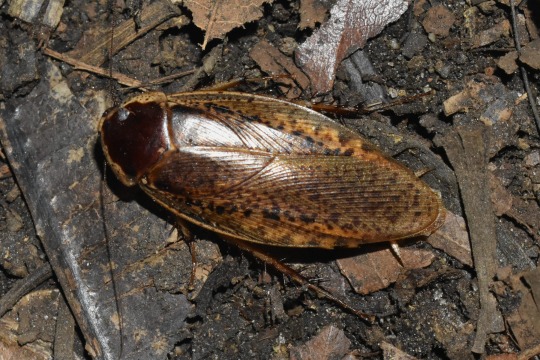
epilamprines are a lovely group of blaberid cockroaches that are diverse in the area; these three were Rhabdoblatta of three different species. the last one there was probably the prettiest roach I saw on the trip; sadly it was found dead on the path.


Pseudophorapsis nebulosa is a big epilamprine that tucks away its appendages and resembles a dead leaf during the day.

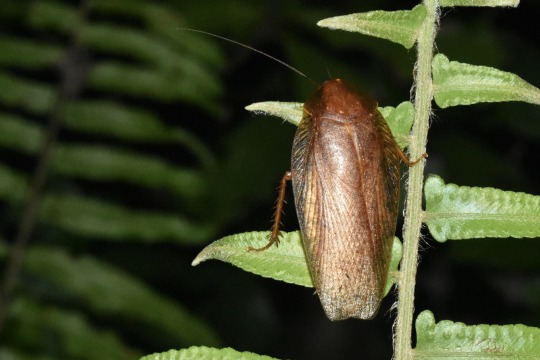
I’m not sure what these next two were, possibly more blaberids?
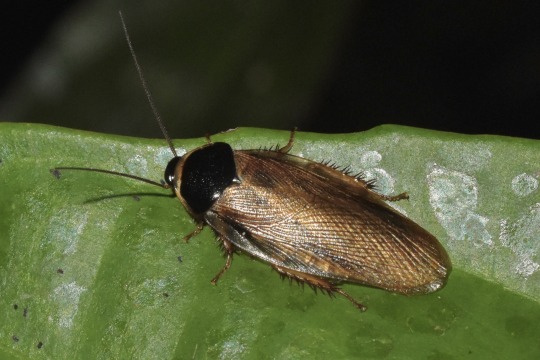
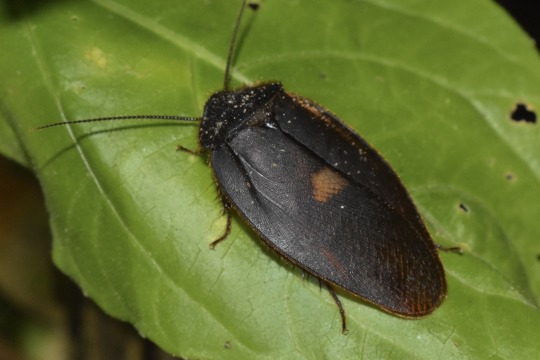
a male Pycnoscelus indicus was a nice sight—while very common, I’m only used to seeing female Pycnoscelus surinamensis, which descends directly from that species! several lineages of P. indicus independently developed the ability to clone themselves instead of mating; these female-only strains are together known as P. surinamensis.
the roach on the right is Ergaula pilosa, a cute burrowing cockroach (Corydiidae).

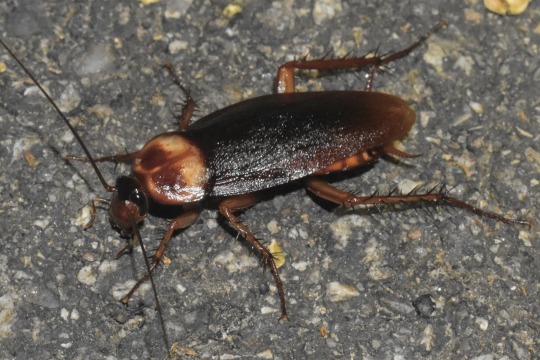
these two nonnative species need no introduction: Periplaneta australasiae and Periplaneta americana (Blattidae), two species that are big “pest” roaches worldwide. these two were just chilling in the forest, however.

blattids are a funny group since one bunch are all “pest roach-y” (the blattines above) but the rest are strictly outdoor species ranging from wildly colorful Australian forms to bumpy, ornate archiblattines like this Catara rugosicollis. I missed getting photos of another lovely species, Protagonista pertristis, which sprayed my hands with an eye-wateringly-powerful scent of oranges before making her escape into the leaf litter.
541 notes
·
View notes
Photo
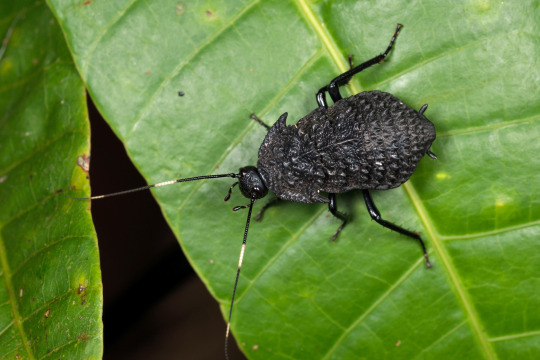



Asian rough cockroach, Catara rugosicollis, Blattidae
Photos 1-2 show females and 3-4 show males
Photos 1-3 by nakarb and 4 by jungle_johnny
518 notes
·
View notes
Text
I’m not a girlwoman or a boyman but some secret, third thing (Blattidae; sp.: Periplaneta americana)
2 notes
·
View notes
Text
my entom professor complains about us doing poorly on the exam as if he did not teach us saying shit like. blattidae looks like a normal cockroach. psyllidae looks like a tiny cicada. sir how do i tell them apart from other families
1 note
·
View note
Link
0 notes
Photo
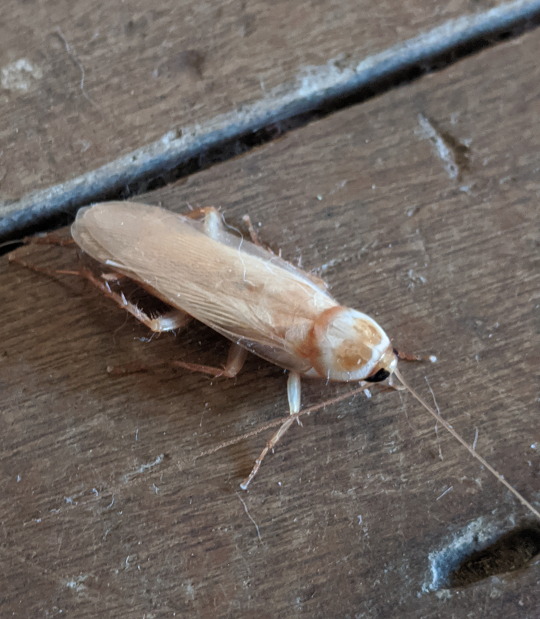

When the American cockroach (Periplaneta americana) molts, it briefly turns white. Disgusting, but still quite cute.
17/12/21
#Periplaneta americana#Periplaneta#Blattidae#Blattinae#Blattoidae#Blattoidea#Blattodea#Cockroaches#molt#molting#bugblr#bugs tw#bug#insects#insecta#insectblr#insects tw#insect#entomology
7 notes
·
View notes
Text
Found a cockroach eating a worm the other day....
22 notes
·
View notes
Text


Pretty roaches! Look at that caramel color!
#honestly cant wait until this group comes back in the summer#they crowd around this one manhole on campus#me#blattidae#roaches#cockroach
1 note
·
View note
Note
Hi you're the blog who identified bugs right? I found this guy in my bathroom in Columbus ohio at 2am, scared the shit outta me. He's one of the biggest bugs ive ever seen. I got these pictures during the catch and release mission.

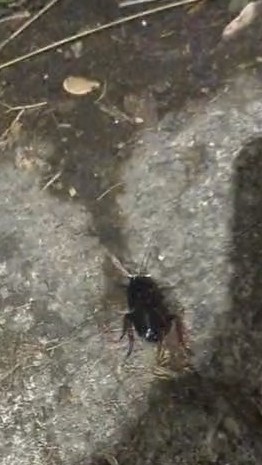
I am ONE OF THE blogs that identifies bugs, yes.
I'm happy to ID this for you...
This looks like an Oriental Cockroach (Blatta orientalis), family Blattidae, order Blattodea.
It's a little hard to tell from the blurry photos, so check out these links, and see what you think.
Oriental cockroach - Wikipedia
oriental cockroach - Blatta orientalis Linnaeus (ufl.edu)
Oriental Cockroaches (psu.edu)
44 notes
·
View notes
Photo

The female American cockroach (Periplaneta americana) naturally produces the sex pheromone, Periplanone B.
Photo by P.G. Koehler
#sp: periplaneta americana#ge: periplaneta#fa: blattidae#or: blattodea#cl: insecta#ph: arthropoda#ki: animalia
0 notes
Note
dress shirts and ties are classy as hell stfu
only loser dads (you) wear dress shirts and ties for fun, dad
205 notes
·
View notes
Text
@tadaubs submitted: I know that these kids have a bad reputation, but they are some of the recyclers of nature, and not all of them want to infest your home. They eat decaying organic matter that has trapped nitrogen and then pass that along to our plant friends through their feces, along with providing excellent protein and nutrition to many animals. Here are the first two I have had the pleasure to photograph from the family Blattidae here on Oahu, HI. American Cockroach (Periplaneta americana) Look at their GLORIOUS antennae, longer than their body! and my new favorite of the Blattidae family, a wonderful Harlequin Roach (Neostylopyga rhombifolia) 🥰


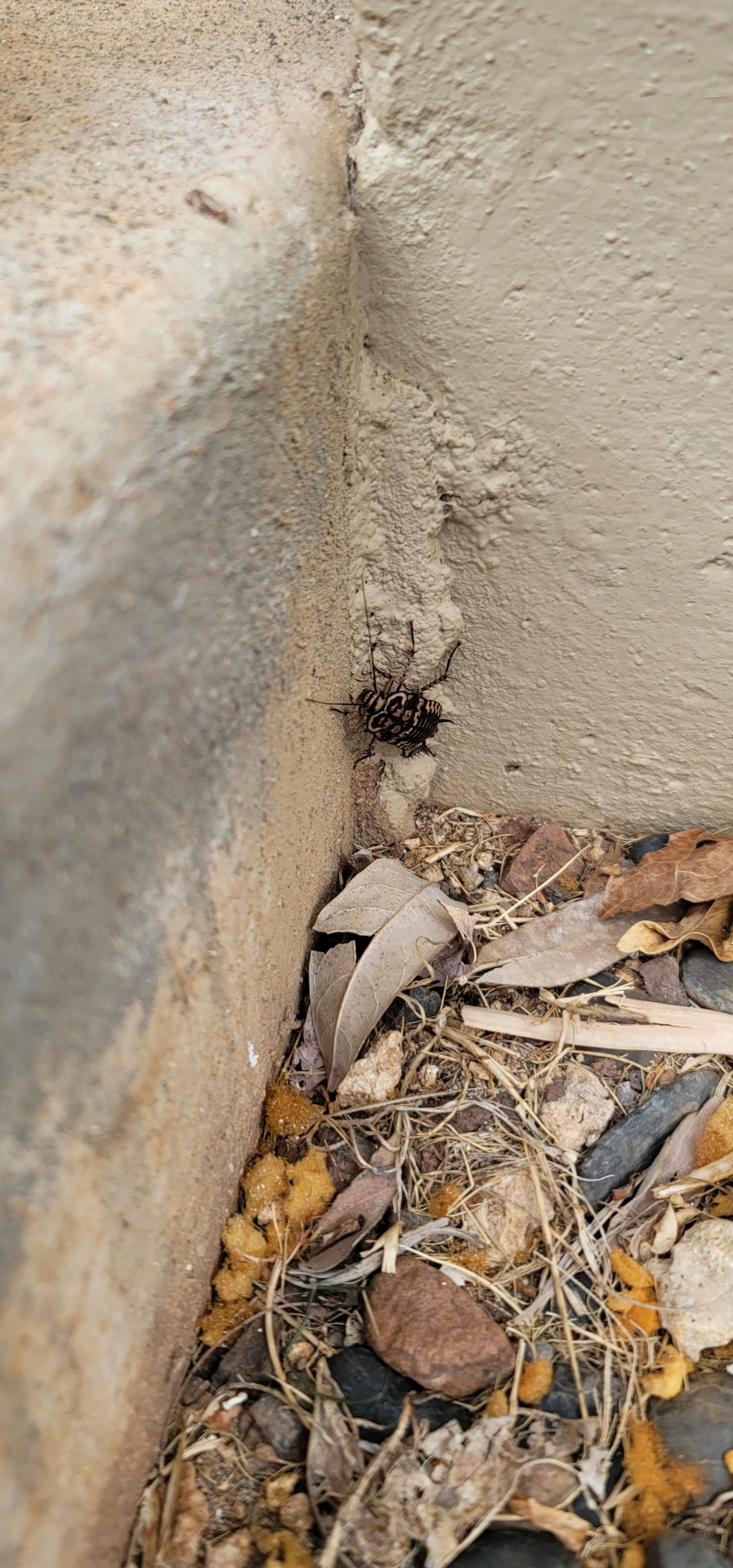



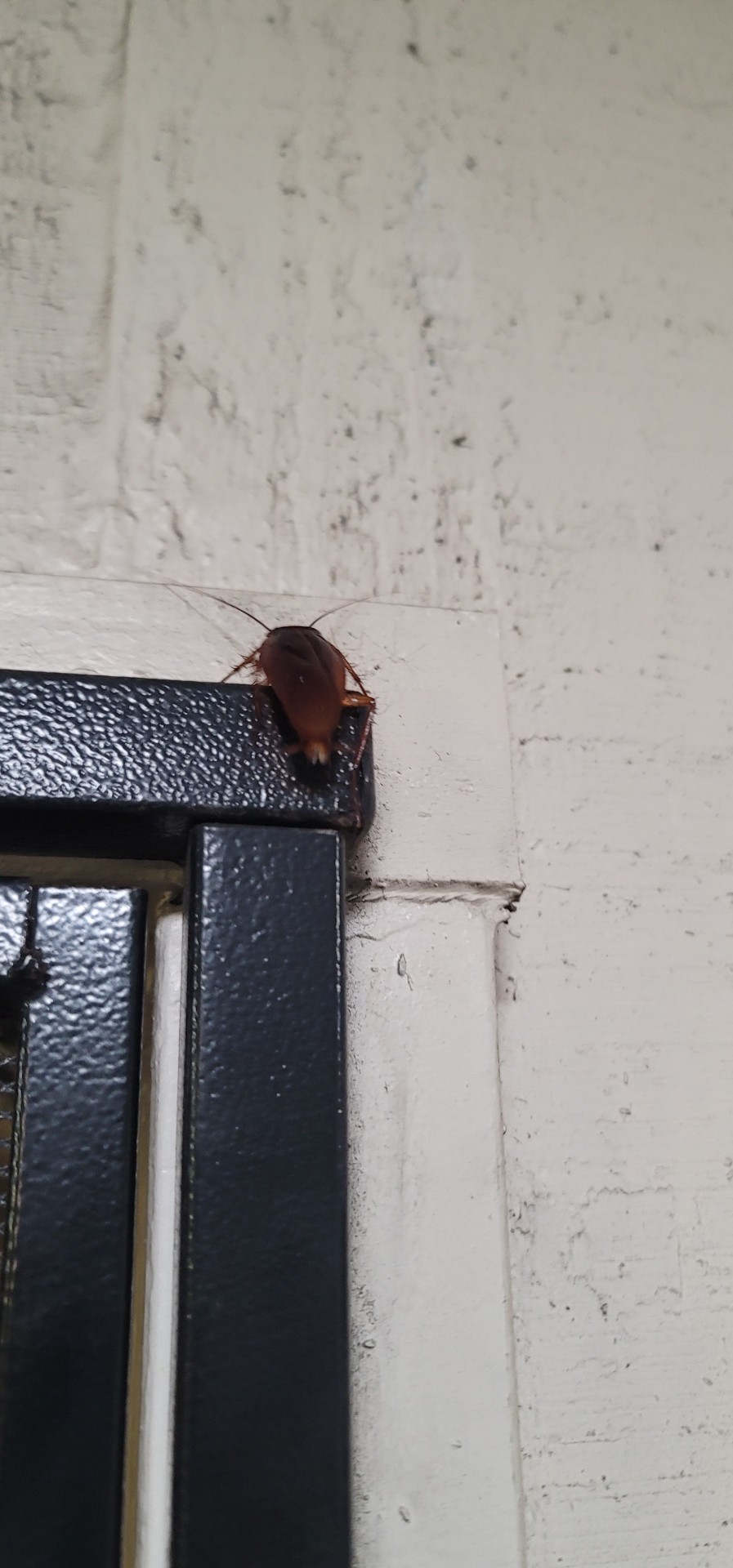


Yes cockroaches have such a bad reputation but they are super important as you said! Plus I think they’re adorable up close. And the harlequin roach is especially beautiful! Thank you for sharing these nice friends and giving them the appreciation they deserve 🖤
97 notes
·
View notes
Note
Would a full grown fetch be noticeable to the naked eye? Even by other ponies? And what do they do exactly after destroying their host and becoming full sized? Do they take over their host? Kind of like a changeling?
Doppel Fetches ain’t my creation, buuut… I seem unable to find their original blog anymore. Huh. Odd.
Their original creator, Azula-griffon, has changed tumblr account name so much I’ve lost track of them at this point… I think they are @cyanocitta-blattidae now?
What I remember of the Doppel Fetches is that they strictly stay invisible to anypony else but their host. They can choose how visible they are to their host as well, as well what form they choose to be seen in to best possibly disturb them or to just be a bodyless voice constantly nagging.
A Doppel Fetch’s purpose is only to feast upon the pain and torment of their host. They are born from trauma but will change size depending on the host’s suffering and well-being. A Doppel Fetch born big was can shrink as the host get better, or be born small and grow as the host get worse. A Fetch will of corse want to grow bigger and stronger, so they purposely make the suffering of the host worse the best they can.
The Doppel Fetches are in fact rather self destructive, because if their host dies they seize to exist. They only exist along their host, but WILL keep pushing them to feel worse and worse where the outcome of suicide to the Doppel Fetch can seem like a climax of misery, but seemingly ignorant of the fact that the death of their host means they stop existing themselves. Only a living mind keeps the Doppel Fetch alive. They are not an independent being, more of a manifestation of the pony’s misery and pain.
I still think their concept is pretty neat.
[edit] They are DEFINITELY cyanocitta-blattidae now [/edit]
35 notes
·
View notes